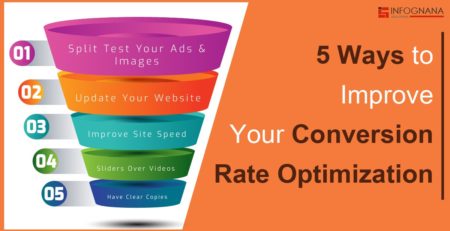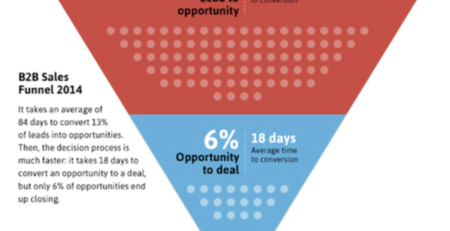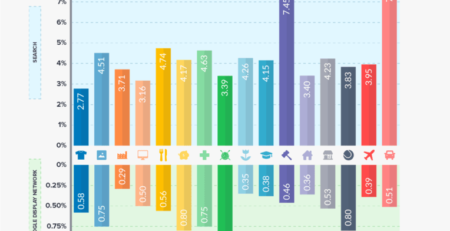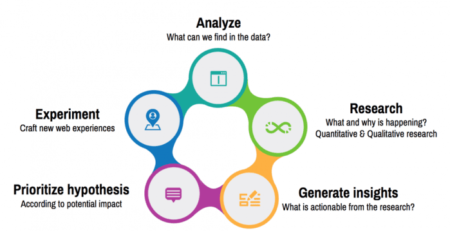How To Calculate Conversion Rate Optimization?
If you’re curious about how to calculate conversion rate optimization, you’re in the right place! Let’s dive into the world of optimizing your website’s conversion rate in a simple and engaging way.
Conversion rate optimization is all about turning website visitors into customers. Sounds cool, right? Well, buckle up and get ready to learn how to make the most of every click, swipe, and tap on your site.
In this article, we’ll break down the steps to calculate conversion rate optimization and give you some helpful tips along the way. So, grab a pencil and paper, and let’s get started on this exciting journey!
Cracking the code on Conversion Rate Optimization (CRO) is simpler than you think. Follow these steps to calculate your CRO like a pro:
- Analyze the total number of conversions.
- Measure the number of visitors to your website.
- Divide the number of conversions by the number of visitors.
- Multiply the result by 100 to get the CRO percentage.
- Voila! You’ve calculated your CRO!
This straightforward process will help you gauge your website’s performance and identify areas for improvement. Happy optimizing!
How to Calculate Conversion Rate Optimization? A Comprehensive Guide
Conversion rate optimization (CRO) is a crucial aspect of any digital marketing strategy. It helps businesses maximize their website’s performance by improving the percentage of visitors who take a desired action, such as making a purchase or filling out a form. To measure the effectiveness of your CRO efforts, it is essential to understand how to calculate conversion rate optimization accurately. In this article, we will provide a detailed guide to help you navigate the world of CRO and optimize your website for better conversions.
What is Conversion Rate Optimization? An Introduction
Before diving into the intricacies of calculating conversion rate optimization, let’s first understand the concept itself. Conversion rate optimization is the process of improving the percentage of website visitors who convert into customers or take any desired action. This action could range from making a purchase to subscribing to a newsletter or downloading a resource. CRO involves analyzing user behavior, identifying areas of improvement, and implementing changes to increase the conversion rate.
Understanding Conversion Rate
The conversion rate is a crucial metric that indicates the effectiveness of your website and marketing efforts. It represents the percentage of visitors who complete a specific goal or conversion action. To calculate the conversion rate, you need two key figures: the number of conversions and the number of website visitors.
To determine the conversion rate, divide the number of conversions by the number of website visitors and multiply the result by 100. The formula looks like this:
Conversion Rate (%) = (Number of Conversions / Number of Visitors) * 100
Optimizing Conversion Rate
Now that you understand how to calculate the conversion rate, let’s explore the process of optimizing it. Conversion rate optimization involves analyzing user behavior and making data-driven changes to your website to encourage more conversions. Here are three key steps to help you optimize your conversion rate:
1. Analyze: Start by analyzing your website’s user behavior using tools like Google Analytics. Identify patterns, drop-off points, and areas where users might be facing difficulties.
2. Testing: Conduct A/B tests or multivariate tests to compare different variations of your webpages. Test elements like headlines, call-to-action buttons, forms, and design changes to see which version performs better.
3. Implement: Once you have identified the changes that lead to higher conversions, implement them on your website. Monitor the impact of these changes and continue testing to further optimize your conversion rate.
The Role of Data in CRO
Data plays a crucial role in conversion rate optimization. By collecting and analyzing various data points, you can identify insights and make data-driven decisions to improve your conversion rate. Here are some key data sources that can help you optimize your conversion rate:
1. Google Analytics: This powerful tool provides valuable insights about user behavior, traffic sources, and conversion funnels. Use Google Analytics to track key metrics and identify areas that need improvement.
2. Heatmaps and Click Tracking: Heatmap tools like Hotjar or Crazy Egg allow you to visualize user behavior on your website. They provide valuable insights about where users are clicking, scrolling, and spending the most time, helping you identify areas for improvement.
3. User Surveys: Conducting user surveys can provide valuable qualitative data. Ask visitors about their experience on your website, pain points, and suggestions for improvement.
4. A/B Testing: A/B testing involves comparing two or more variations of a webpage to determine which version performs better. This data-driven approach helps you make informed decisions about your website’s design and content.
The Importance of Mobile Optimization
With the widespread use of smartphones, mobile optimization has become crucial for conversion rate optimization. According to Statista, over half of all web traffic comes from mobile devices. Therefore, it is essential to ensure that your website is optimized for mobile users. Here are some key tips for mobile optimization:
1. Responsive Design: Ensure your website is built with a responsive design that automatically adjusts its layout and elements based on the user’s screen size.
2. Mobile-Friendly Content: Optimize your content for mobile viewing by using shorter paragraphs, larger fonts, and clear call-to-action buttons.
3. Fast Loading Speed: Mobile users expect instant access to information. Optimize your website’s loading speed to prevent users from bouncing to another site.
4. Simplify Navigation: Make sure your website’s navigation is easy to use on smaller screens. Use clear menus and navigation bars, and prioritize important information.
In this article, we provided a comprehensive guide for calculating conversion rate optimization (CRO) and optimizing your website for better conversions. By understanding the conversion rate formula, leveraging data, and optimizing for mobile users, you can significantly enhance your website’s performance. Remember to continuously monitor and test your website to identify areas for improvement and stay ahead of the competition.
Key Takeaways: How to Calculate Conversion Rate Optimization?
- Conversion Rate Optimization (CRO) helps businesses improve their website’s performance.
- To calculate CRO, divide the number of conversions by the number of website visitors and multiply by 100.
- Understanding CRO metrics, such as bounce rate and average session duration, is crucial for effective optimization.
- Perform A/B testing to compare different versions of your website and identify the most effective design and content.
- Continuous monitoring and analysis of conversion rates are essential for ongoing optimization efforts.
Frequently Asked Questions
Introduction: Conversion Rate Optimization (CRO) refers to the process of increasing the percentage of website visitors who take a desired action, such as making a purchase, filling out a form, or subscribing to a newsletter. Calculating CRO helps businesses evaluate the effectiveness of their website and marketing strategies. Below are some commonly asked questions about calculating conversion rate optimization.
1. How do I calculate conversion rate optimization?
To calculate conversion rate optimization, you need to consider two main factors: the number of conversions and the number of website visitors or interactions. The formula to calculate CRO is:
CRO = (Number of Conversions / Number of Visitors) x 100
For example, if you had 1000 website visitors and 50 conversions, the CRO would be (50/1000) x 100 = 5%. This means that 5% of your website visitors are converting or taking the desired action.
2. What is a good conversion rate optimization percentage?
There is no fixed benchmark for a good conversion rate optimization percentage, as it varies across industries and business types. However, a higher conversion rate is generally considered better. It’s important to monitor your conversion rate over time and compare it to industry averages or your own past performance to gauge success.
Factors such as your target audience, website design, user experience, and marketing strategies can all impact your conversion rate. Consider conducting A/B testing and making incremental improvements to constantly optimize your conversion rate.
3. What are some common challenges in calculating conversion rate optimization?
Some common challenges in calculating conversion rate optimization include differentiating between unique visitors and repeated visits, attributing conversions to specific marketing channels, and tracking conversions across multiple devices and platforms. Additionally, ensuring accurate tracking and data collection is crucial for reliable calculations.
It’s important to implement analytics tools and tracking codes properly, set up conversion goals, and regularly review and validate your data to overcome these challenges and obtain accurate conversion rate optimization calculations.
4. How can I improve my conversion rate optimization?
Improving conversion rate optimization involves a combination of analyzing data, optimizing the user experience, and refining marketing strategies. Some strategies include:
– Conducting A/B testing to compare different versions of your website or landing pages and identifying the most effective elements.
– Simplifying your website and making the conversion process clear and intuitive for visitors.
– Enhancing your call-to-action buttons and optimizing their placement and design.
– Improving website loading speed to reduce user frustration and increase conversions.
– Personalizing your content and offers based on visitor behavior and preferences.
Continuously monitoring and analyzing your data, experimenting with new tactics, and staying updated with industry trends can help you improve your conversion rate optimization.
5. Are there any tools available to help with calculating conversion rate optimization?
Yes, there are various tools available to assist you in calculating conversion rate optimization. Some popular ones include Google Analytics, which provides valuable insights into visitor behavior, conversion tracking, and funnel visualization. Other tools like Optimizely, VWO (Visual Website Optimizer), and Hotjar offer A/B testing capabilities, heatmaps, and user recording features to optimize conversions.
Choose a tool that best suits your needs, integrates well with your website, and provides the data and features necessary for your analysis and optimization efforts.
Summary
Calculating conversion rate optimization is all about understanding how well your website is converting visitors into customers. It’s important to track the number of visitors and the number of conversions to calculate the conversion rate. By experimenting with different strategies and analyzing the data, you can improve your conversion rate over time. Remember to focus on optimizing your website design, content, and user experience to make it easier for visitors to convert.
In conclusion, calculating conversion rate optimization involves tracking visitors, conversions, and using that data to improve your website. It’s a process of testing, analyzing, and refining to make your website more effective in turning visitors into customers. So, keep experimenting, learning, and optimizing to achieve better results!












